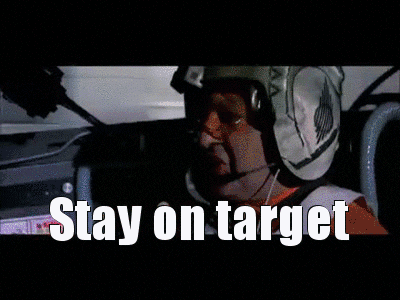Landing pages are undeniably one of the most important features of a website’s design. If you’re here, then you’re having trouble figuring out how to create an effective landing page. Whether that’s because you need more information on the topic, or because you’re not particularly tech-savvy, we’ve got you covered!
What is a Landing Page?
Okay, so let’s start from the beginning. Before you even think about using AI to help you generate your landing pages, you need to know exactly what it is that you’re trying to create.
A landing page, put simply, is a standalone page that’s used for the sole purpose of marketing or advertising. This is where a person “lands” after they click on your campaign, be it an email link, SMS, or popup ad. Basically, this is where your CTA will take someone if they choose to click on it.

Are Landing Pages the same as Web Pages?
Not exactly.
Web pages contain large amounts of general information that’s aimed at helping visitors explore and navigate the website.
When it comes to marketing, landing pages serve a different purpose.
They are designed to persuade visitors to take a desired action. They’re a lot more focused on conversions and engagement than anything else.
Think of it as your follow-through on the promises you made to viewers through your campaign.
Are you starting to see why these pages are so important?
No?
Okay, let’s dive a little deeper.

Why are Landing Pages so important?
First of all, no PPC ad is complete without an effective landing page.
If you’re paying for the ad to show up in the right place and time, you need to make sure that you’re making it worth your while. Having a quality landing page for your audience to visit when they click on your ad will have a drastic impact on your conversion rates.
Without a proper follow-through, you’ll end up increasing your lead acquisition cost (or Cost per Lead/CPL).
Secondly, this is the most effective way to generate leads.
Businesses have a habit of sending viewers to their home pages. Well, they might as well throw those potential leads away. If companies made use of designated landing pages with eye-catching CTAs, they’d have a much higher chance of capturing leads. What’s more, if they took it a step further and create effective custom workflows for nurturing these leads, they’d have to try to keep up with their new conversion rates!
To give you an idea – Landing pages have a 160% higher conversion rate compared to other signup methods.
And lastly, it takes your marketing to a whole new level!
A high-performing marketing strategy relies heavily on content. Lots and lots of content.
But, as marketers, we know how challenging that can be. Generating large amounts of valuable content on a regular basis is not for the faint of heart.
Landing pages are a great addition to any marketing strategy. They help increase traffic and can even improve your site’s SEO. They can be shared through a multitude of channels, including social media, and can be used as the focus point for your emails.
Another advantage that people don’t always consider – data can make or break your marketing success. Using landing pages will provide extra insight into the behavior of your audience. AI content automation insights help elevate your marketing strategy in ways that wouldn’t be possible otherwise.

How can AI help?
Sometimes coming up with catchy, engaging content and copy for a landing page is difficult. It’s even more challenging if you have no prior marketing experience and you’re still trying to find your feet. That’s where AI comes in!
Let’s use ContentBot as an example. You want to create a landing page that will help generate leads. One of the following applies to you:
- You’re too busy to put in the time and research that goes into its creation.
- You don’t know how to create a quality page that will do the job you’ve intended.
- You’ve got a case of writer’s block and can’t figure out the way forward.
- Let’s be honest, you just don’t feel like it.
Step 1: Enter your input information. This includes your product name, along with a short description, and keywords.
Step 2: Click “Generate Inspiration”.
Step 3: … Nope, that’s about it. AI does the rest!
The generator will offer three custom-built landing pages complete with a header, sub-header, enticing description, features, and a benefits section. If you’re not satisfied with the first three outputs, you can simply generate more.
The software was developed to take your marketing to the next level, while requiring a fraction of the effort. To take it a step further, you can even click on “build page” to see a demo of what your page would look like. With ContentBot, you generate creative, compelling and cohesive copy in a matter of seconds.
In this blog post, we’re going to look specifically at how ContentBot can be used to create highly effective landing pages with just a few clicks. You’ll be able to transform your visitors into customers, and we’re going to show you how.
Let’s get started!

How to generate an AI Landing Page
1. Start with your target audience
If you had to ask a marketer what their chosen superpower would be, I’m pretty sure we’d all say mind reading. Looking at endless sheets of data in order to analyze consumer buying behavior takes time, energy, and countless cups of coffee. But, what if I told you that there’s an easier way?
AI content automation insights are quickly becoming every marketer’s best friend. They take away the need for manual data capturing and analysis. I know, it sounds like a dream! You can cut costs, while enhancing the accuracy and efficiency of your analytics. Here’s how it works:
- AI can collect, analyze and organize data on a much larger scale, and in a fraction of the time than it would take humans.
- Machine learning software makes use of algorithms to make predictions and identify patterns that people might miss.
- Thanks to these abilities, AI can achieve effective segmentation and profiling of customers, helping marketers hone in on the interests of their audiences.
With tools like real-time insights, segmentation, and best of all – predictive analytics, you’ll gain a better understanding of the individual needs and preferences of your customers. You’ll be able to improve the accuracy of your targeting and create highly-personalized campaigns.
Once you have a better understanding of who your target audience is, you can take it a step further. With the help of AI, you can generate personalized landing pages that are specifically tailored to your viewers. This enhances your focus on user intent (UI) when creating landing pages, leading to higher conversions and lead generation.

2. Create page copy
If you want to create unique content and copy for your website based on certain data sets and input, then your best bet is using generative AI.
Generative AI is an incredibly intelligent technology that is programmed to create new, never seen before content (that includes images and videos) using algorithms. Through machine learning, it analyzes a set of data, and learns from it. By identifying patterns recognizing styles, it can then produce content that’s very similar to what it’s been fed. People are just now scraping the surface of this software’s potential!
If you’re not too familiar with the ins and outs of SEO, then using AI is the perfect way to make sure that your content is still optimized for search engines. The best AI marketing software has been programmed to generate content that is optimized to help its users rank on SERPs. Not only does this save boatloads of time, but it means that marketers can avoid the headache of SEO courses and training. While we do believe that every marketer should have some basic SEO knowledge, today’s AI content automation tools make it virtually unnecessary.
ContentBot takes its content generation up a notch for its users. Once you’ve entered your input variables, it will create suitable copy in less than a minute. What’s more, the content will already be sectionalized into the different headings, subheadings and features. This means all you have to do is copy and paste.
3. Time for visuals
AI’s capabilities when it comes to image and video generation are quickly becoming a hot topic, and for good reason. By simply adding a video to your landing page, you can increase conversions by 86%.
Using artificial neural networks (ANN), an AI image generator can create surprisingly realistic and unique visuals. You can input your requirements and descriptions, and within a few seconds, the idea you had in your mind will materialize in front of you. The AI’s advanced learning abilities mean that it can be fed a sample image or video, recognize the styles and patterns, and generate new visuals that mimic any forms of art.
For those of us who lack a certain creative finesse, this technology is exactly what we need to take our marketing to the next level. We can tell the AI what image we’re picturing for the website, without needing to put too much thought and energy into its creation. And as an added bonus, this also means that we can tailor the visuals to suit our own personal brand and style, helping us achieve a more cohesive design overall.
So, if you:
- Struggle to find time to search for appropriate images and videos for your site.
- Battle to find suitable images for your particular niche or brand.
- Have a clear image of what you want to create, but few resources to achieve it.
- Don’t want to worry about copyright infringements.
- Quite frankly, don’t have a creative bone in your body..
Then using an AI image generator is the answer to your problem!

4. Bringing in multimedia
Multimedia is where all your visuals, content and creative aspects come together. It’s also how you integrate your website with other sources, like social media. It’s a great way to give your website a competitive edge, and to make it more interactive for your visitors. It helps you focus on the user experience (UX) design aspects of your site.
There are a few ways that businesses can use multimedia to enhance their websites. By now, we’ve all had some kind of interaction with a Chatbot when visiting a website. Oftentimes, they popup to ask if you need assistance or to offer a short welcome message. They are typically programmed to answer all FAQs and customer queries around the clock, eliminating the need for customer support teams in the process.
One of the most highly spoken about chatbots is ChatGPT’s conversational bot. You can input your requests, and within a few seconds, receive a response in a conversational tone. ContentBot’s InstructBot does the same thing and then some. It’s unbiased, with better accuracy, and can recall information from earlier on in the conversation to alter its responses. You can even use the same ChatGPT prompts!
Quality UX design is often overlooked by developers and marketers. It’s unfortunate, since it can have a dramatic impact on your site’s bounce rate. This has a negative impact on your SEO and reduces your ROI as a whole. That’s why if you need a little help improving your site’s usability to make it more user-friendly, we recommend incorporating AI.

5. Measure and analyze results
If you integrate AI into your marketing efforts, you’ll be able to see what tactics are most effective, and where you might have gone wrong. It’s the best way to determine where your strategy needs fine tuning to give you the best results. This means resources are used more efficiently, ROI increases, and more time is spent on strategic growth.
When it comes to visuals, you’ll be able to see exactly how well an image or video performed, and why. Not only will AI help you produce content that’s much more targeted to your audience, but it will show you the figures to prove it.
Keeping track of your content marketing KPIs is simpler, too! These indicators give you reliable, tangible data that you can use to enhance your strategy even further moving forward. Numbers you should be monitoring include:
- Growth of sales
- Leads
- Customer acquisition cost
- Website traffic
- Social media engagement
- Conversion rates
There are many other indicators that are beneficial for any marketer to use when developing their next campaign, but these are just a few to get you started. Marketers should educate themselves about which KPIs they should monitor.

Some tips for success
Qualities of an effective landing page
A clear Call-To-Action (CTA)
As we mentioned before, landing pages are primarily focused on increasing conversion rates. That means trying to get visitors to take a desired action, and in order to do that, you need to make it as clear as day.
You should also try to tailor it to your specified target audience. Personalized CTAs perform 202% better than regular generic calls.
Clean and simple
When it comes to your page’s structure and overall design, try to keep it clean and simple. A minimalist design goes a long way for these types of pages. Remember to place important features above the fold, and try to keep links to a minimum.
A headline that packs a punch
Your heading is going to be the first thing that viewers see when they pop onto your page. Make sure it catches their attention! Try to use a heading that’s intriguing and peaks the viewer’s interest to find out more. Any other content that you add after that should help to keep the ball rolling.
The power of visuals
Visuals add another dimension to an otherwise stagnant website. They help to grab the viewer’s attention in a way that words can’t. In fact, 91% of consumers prefer visual content to written content. Make sure to take advantage of this feature if you want to make your page as appealing as possible. That includes images, videos and even effective color schemes.
Mobile optimization
A good landing page is one that’s been optimized for all search engines on every device. It’s more convenient for your viewers, and helps you cover the gap between them and your site.

Common mistakes to avoid
- Having too many CTAs on one page. (Remember, keep it clean!)
- Inconsistencies regarding structure and design. Aim for cohesion throughout your branding if you want to establish trust and credibility with your audience. (That includes matching your ad to the landing page copy)
- Not incorporating visuals. People are visual beings, make sure to take advantage of this.
- A lack of trust. Too many websites don’t display their trust indicators on their landing pages – do it!
- Not tracking your landing page’s performance. You won’t know how successful your page is, or how to improve it, without monitoring its data.
- Not optimizing your land page. These pages should still be optimized for search engines before they go live. If you implement SEO trends well, they can contribute to higher rankings and conversion rates.

So, what did we learn?
Landing pages are a surefire way to increase your conversions, and ultimately your overall marketing ROI. They’re simple, focused and highly targeted pages that visitors land on when they click on your ad.
If you were struggling with figuring out where to start with creating one, hopefully this guide has given you a better idea. ContentBot is an all-encompassing, high quality marketing tool that, if you ask us, should be in every marketer’s wheelhouse. It’s exactly what you need to take your marketing to the next level, while taking a load off of your plate. It’s simple, convenient, and allows you to handle all of your marketing from a central point (and yes, that means more than just landing pages).
Effective headings, SEO, and a simple design all contribute to an effective landing page. But we know that it’s not always easy making your ideas a reality. Maybe you’re not so great with words, or those creative wells have run dry, or maybe you’re just busy. Whatever the reason, using ContentBot to generate AI landing pages is one of the best things a marketer can do to up their game and ease their loads.

- How AI is Transforming the SEO Landscape: A Marketer’s Perspective - February 29, 2024
- How To Use AI For Keyword Research: A Marketer’s Guide - February 16, 2024
- The Impact of AI Writers on SEO Performance: Friend or Foe? - January 31, 2024
